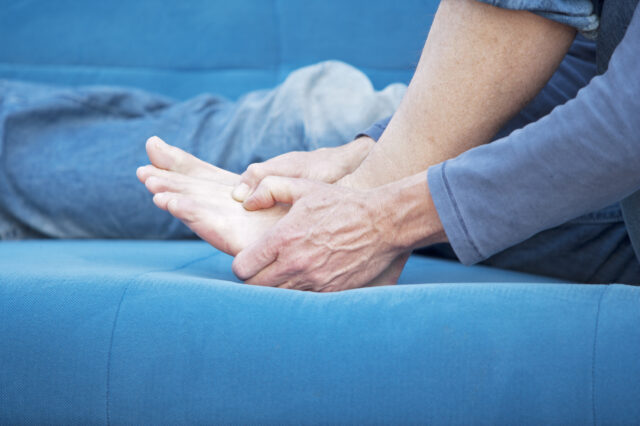How to handle heel pain
If you ever experience pain and stiffness in the bottom of your heel then you may be dealing with plantar fasciitis — a condition where the tissue between the heel bone and the toes becomes swollen or inflamed.

If you ever experience pain and stiffness in the bottom of your heel then you may be dealing with plantar fasciitis — a condition where the tissue between the heel bone and the toes becomes swollen or inflamed.
Sometimes heel pain can be entrapment of the nerve, sometimes it can be stress fracture of the heel so providers have to be very careful when making a diagnosis. But plantar fasciitis, or heel pain, is the most common complaint.
We’re on our feet a lot, and weight in this country has become a big issue and our feet bear the brunt of that weight. The heel is designed to be a shock absorber, but it can only take so much. Your foot type can also contribute to this pain. If you have a high arch, your heel is pitched up and you’re putting a lot of pressure on the heel. If you have flat feet, you’re stretching the ligament out and putting pressure on the heel.
Symptoms of plantar fasciitis
The most common symptom is pain and stiffness in the bottom of the heel. The heel pain may be dull or sharp. The bottom of the foot may also ache or burn.
The pain is often worse:
- In the morning when you take your first steps
- After standing or sitting for awhile
- When climbing stairs
- After intense activity
- Walking, running, and jumping sports
The pain may develop slowly over time, or come on suddenly after intense activity. Usually with heel pain, a provider will order an X-ray to make sure there are no fractures. But typically, stretching is recommended and is an important step. Stretching could relieve the pain before it gets worse, which could prevent that trip to the doctor.
Treatment for plantar faciitis
The two most important home remedies are ice and taking a frozen can and rolling it over the bottom of your foot with a sock on. It’s easiest to do this at night while watching television. Get a can out and roll the can on the bottom of the foot during the program and take breaks during commercials.
Plantar fasciitis usually presents with the first step in the morning being extremely painful for the patient. That’s why we recommend stretching before getting out of bed. Take a belt and put it around your foot and pull. Then massage the heel and working it. The good thing about heel pain is that 95 percent of patients can be treated conservatively.
If you are experiencing heel pain or other foot and ankle conditions, schedule an appointment with our team by calling 904-244-0411 or visit UFHealthJax.org/foot-ankle.